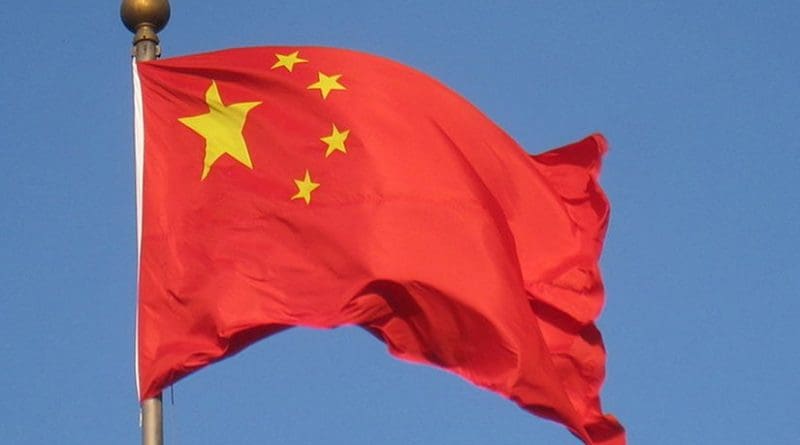‘Two Sessions’ And Chinese Economy: Communication Gap And Middle Income Trap – OpEd
As analysts have predicted, the Two Sessions will focus and deliberate on the need of supply side reforms and structural changes facing China. This comes at an interesting time, when China’s growth concerns are under global spotlight. Chinese administration last year highlighted the fact that supply side reforms are the key to renew, consolidate and stabilize growth potentials with an array of measures which have plagued Chinese economy. The problems faced were reducing overcapacity, reducing a dependence on the export driven model, reducing costs and also destocking. It also underscored a need to identify growth areas.
Chinese economy, grew rapidly, for more than three decades. It was based on strong exports, and massive energy oriented growth, on the back of manufacturing base. This growth lifted millions out of poverty, and transformed China from a agro based economy, to an industrial one. However, naturally as one gets from an industrial manufacturing economy, there were structural problems which came alongside, problems like labour mobility, and clean environment, and equity stagnation. Recognising these structural difficulties were key, and subsequent strategy was needed to mature Chinese economy while not neglecting traditional competitive advantages, like skills, productivity, and export orientation.
So, here are some things Chinese policy makers need to keep in mind.
Chinese city planning need to focus more on sustainable energy saving, which will include plans for a radically different transport system. As the Chinese President mentioned, if living standards are to be improved, the first priority should be on livable cities. Pollution needs to be tackled urgently, and improving the energy consumption would be a primary goal. Also, we have seen coal consumption has went down from the start of this decade, and it needs to keep going down. China needs to also invest in innovative research on green energy, and have a plan on how to shift from oil and gas to green which would be a major challenge and there needs to be a plan for it. China had over 4.44 million companies and startups established, up 21.6 percent from 2014. That’s a start and it needs to keep growing.
There is a consensus among Chinese supply side economists that the shortage of supply is what generating the domestic consumption trap, as people need to even go distances to buy good toilet lids, for example. In line with Say’s law, which states supply creates its own demand, the Chinese economists figured, the essential of boosting domestic consumption is by trying to boost supply rather than control demand. “The root of excessive production capacity lies in mismatch of supply and demand, and even the adoption of Keynesian theory won’t work. In the view of supply-side economists, supply-and-demand mismatch could only be broke from the supply front, instead of resorting to demand management policy.”, a report in Xinhua stated earlier this year.
Achieving strong economic growth of a high quality, with a strong domestic market, a steady consumption culture with a high standard of living with lower pollution, congestion and waste; attractive and liveable cities, and a clean and secure energy system is a difficult task, but not impossible. It however requires string discipline, and a steady commitment to structural and policy reform. Traditional market economies, which depend on the market to itself correct course, fails to maintain this balance which results in busts. If done successfully, China can be an example to the world. However if not…there could be trouble.
China wants to take around fifty millions people from lower strata to middle income strata society. It is an ambitious plan but it needs to be worked on. Here’re the problems China might face. Firstly, China needs to avoid Middle Income trap. Middle income trap is a theory which states that a country which achieved a certain amount of growth, and which increased the productivity will at some point get stuck in a growth stagnation. Examples of these are most European economies. Greece and Argentina also comes to mind.
Here are the ways a country can avoid Middle Income trap. The first way is to boost spending on development. Spending on development increases wealth mobility, and in the long run is beneficial for Research and development projects which benefits economy. While China is miles ahead that its counterparts in Asia, it still lags behind the Western countries in spending for RandD. Secondly spending on infrastructure helps local workforce. India is a prime example where infrastructure spending stalls occasionally due to federal structural reasons, something China would like to avoid.
The second key thing that will be discussed hopefully is how to boost investor confidence and stop capital outflow. Thankfully not all predictions about China’s economy is Bearish. Goldman Sachs is positive about long term growth outcomes, as in ANZ bank. According to the Hurun Institute’s Global rich list, the combined wealth of all 568 Chinese billionaires on the list is $1.4 trillion. And it now outstrips United States, something which you possibly won’t hear with the constant negative economic outlook in the media. That is a severe communication gap which needs to be urgently addressed. Market confidence is a crucial and volatile thing, and capital flow depends on confidence. To boost economy with reforms is not the only thing that should bother Chinese policy makers, but how to portray it to the entire world, that capital inflow and investment should also be something that needs to be looked upon. To summarise, communication gap and middle income trap are the two things that needs to be in focus of Chinese economists, in the Two Sessions as well as after that.
This article appeared at Bombs and Dollars.

